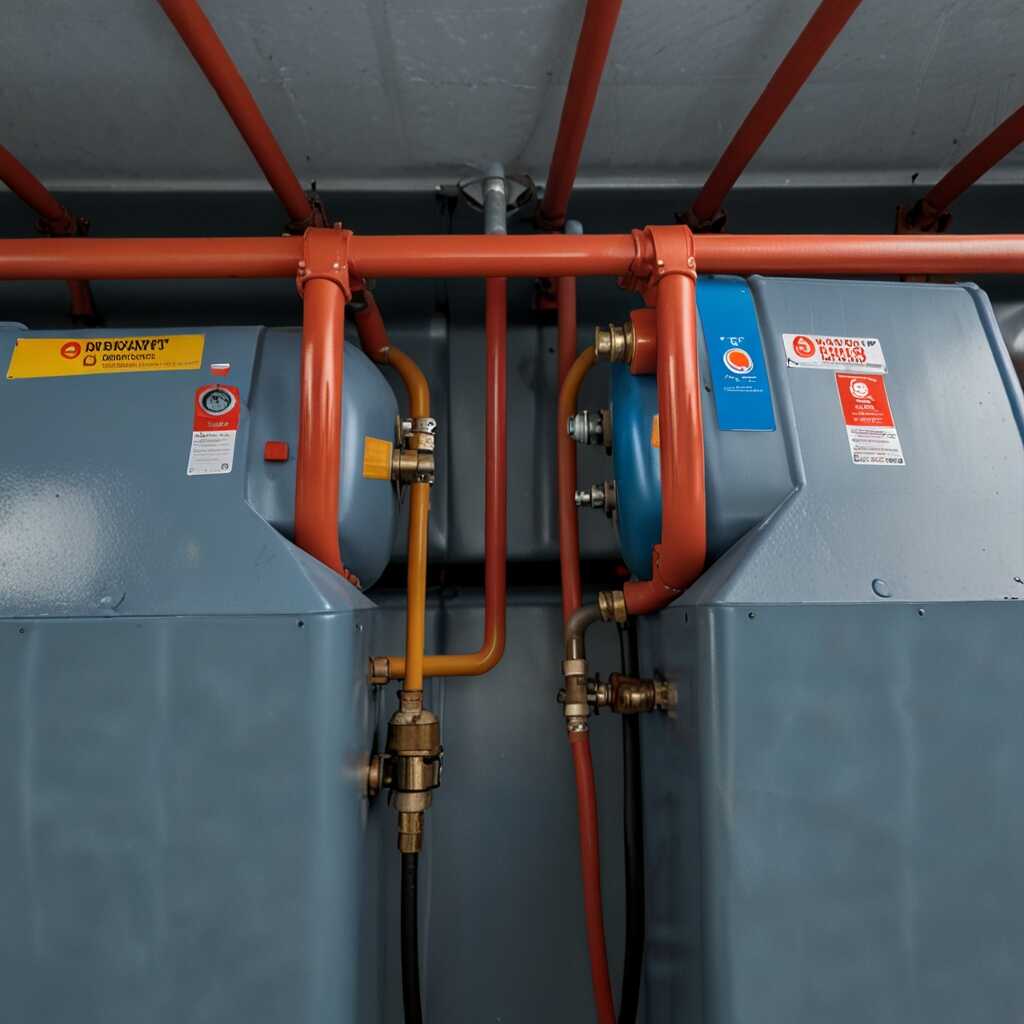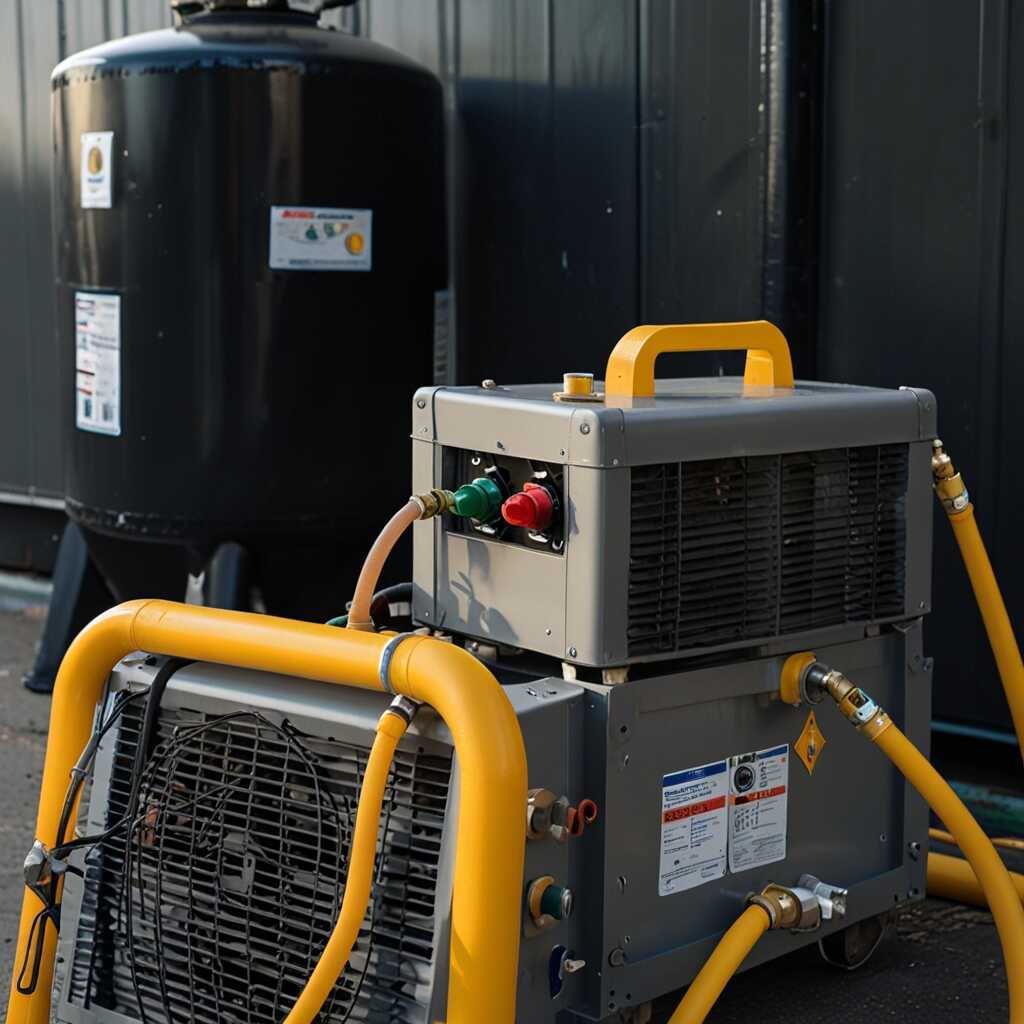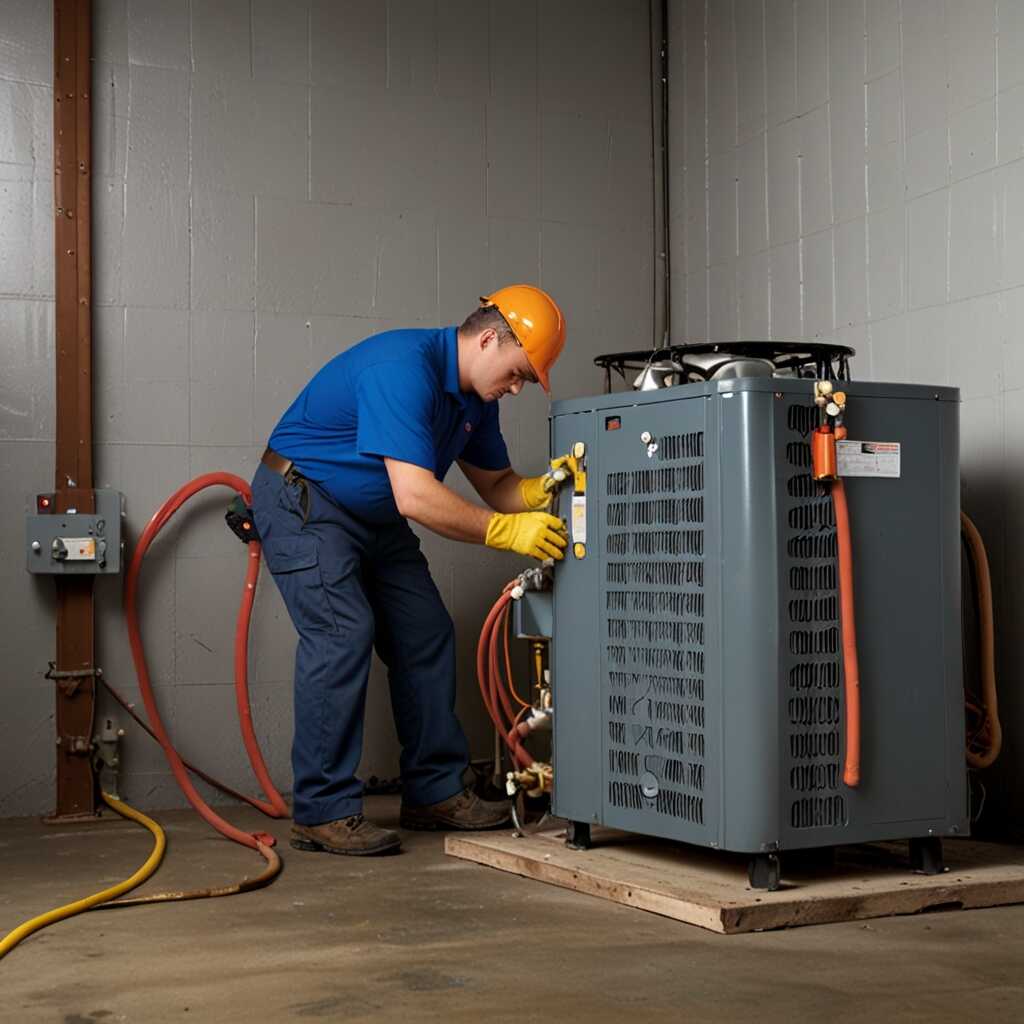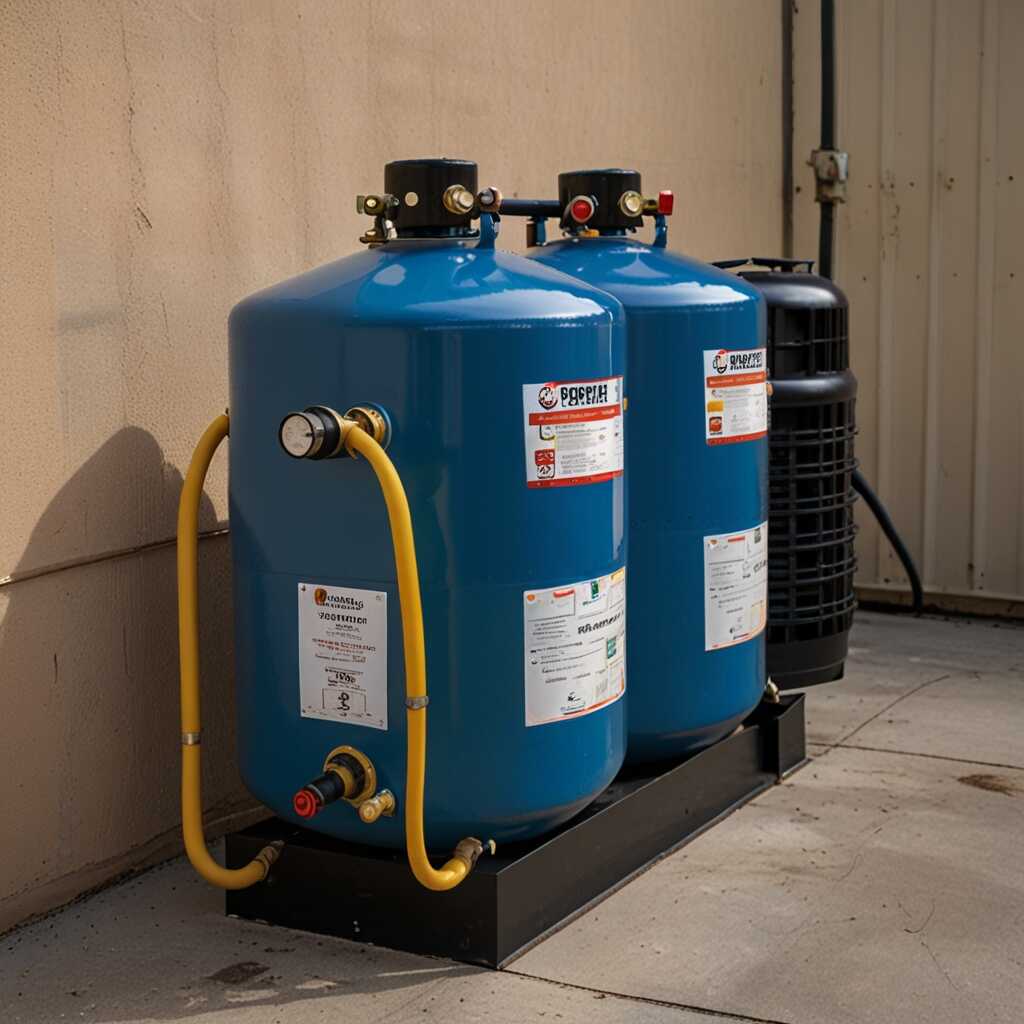Understanding the operational status and troubleshooting methods of refrigerant recovery machines with visual indicators is essential for HVAC professionals. These machines provide critical information through visual signals that help ensure efficient and safe refrigerant management. At Refrigerant Recovery Pro, we aim to enhance your knowledge about these indicators and the best practices in troubleshooting. Our expert guidance ensures you can effectively maintain your equipment and comply with regulatory standards.
Understanding the Role of Visual Indicators in Refrigerant Recovery
Visual indicators play a crucial role in refrigerant recovery machines. They display the operational status of the machine, such as pressure levels, recovery progress, and warning signals. This information helps HVAC professionals assess machine performance in real-time. Reliable visual indicators enhance operational efficiency by preventing potential leaks and ensuring proper refrigerant management. Using these features improves overall service response time by alerting technicians to issues requiring troubleshooting. Statistics show that machines with visual indicators can reduce troubleshooting time by nearly 30%. This reliability ensures that tasks are completed quickly and safely.
Types of Visual Indicators and Their Functions
Several types of visual indicators are used in refrigerant recovery machines. These include LED lights, pressure gauges, and digital displays. LED lights typically indicate the machine’s operational state, effectively signaling when it is powered on, recovering refrigerant, or experiencing errors. Pressure gauges provide real-time readings of refrigerant pressure, allowing technicians to ensure that the machine operates within the ideal range. Digital displays often combine multiple readings into one interface, enhancing usability. The right indicators enable technicians to make quick assessments, ensuring that the refrigerant recovery process remains efficient and reliable.
Mechanics Behind Visual Indicators in Recovery Machines
Visual indicators in refrigerant recovery machines serve essential functions that enhance operational efficiency and reliability. They communicate real-time data by displaying lights and signals that signify various statuses. Common indicators include green lights for normal operation, red lights for errors, and yellow for maintenance reminders. These signals provide HVAC technicians with crucial information on performance and allow for quick diagnosis during troubleshooting. By understanding what each light represents, technicians can make informed decisions that minimize downtime and optimize refrigerant management, ensuring quality service is delivered. A comparison of these indicators helps assess unit performance and inform potential equipment upgrades.
Understanding Signal Color Codes and Their Meanings
Signal color codes are vital for interpreting the status of refrigerant recovery machines. Green typically indicates normal operation, ensuring technicians know the machine is functioning correctly. Yellow lights often signal a need for maintenance, prompting proactive checks to maintain performance. Red lights warn of critical issues that require immediate attention, helping to prevent system damage. Knowing these color codes enhances troubleshooting efficiency for HVAC personnel. It also assists in verifying whether the unit meets EPA regulations. By regularly testing these indicators, technicians ensure that recovery machines operate reliably, maintaining their essential role in HVAC tasks.

Effective Troubleshooting Using Visual Indicator Readings
HVAC professionals can quickly interpret visual indicators by understanding the different lights or gauges present on refrigerant recovery machines. Common operational issues include low refrigerant levels, system pressure irregularities, or filters needing changes, all of which can be identified through specific colored lights or readings. Effective troubleshooting can take as little as 10 to 15 minutes when relying on these indicators, allowing for swift resolution of issues.
Understanding Each Indicator’s Functionality
Visual indicators on refrigerant recovery machines are designed to provide critical feedback regarding machine performance and operational status. For example, a green light typically indicates normal operation, while a red light may signal a fault or danger. By regularly reviewing these indicators, technicians can ensure the machine is in good operational condition and can handle demanding tasks. This use of visual indicators improves overall efficiency and reliability during HVAC tasks, making troubleshooting easy and fast.
Key Statistics on Refrigerant Recovery Equipment
- Most refrigerant recovery machines operate with a recovery rate of up to 99% efficiency.
- Typical recovery tanks hold between 30 to 50 pounds of refrigerant.
- Visual indicators are present in over 70% of modern recovery machines for better user interface.
- Up to 15% of refrigerant can be lost during incorrect recovery, affecting efficiency.
- Routine maintenance can increase a machine’s lifespan by 20-30%.
- Most professionals recommend servicing recovery machines every 3-6 months for optimal performance.
- The average cost of a refrigerant recovery machine ranges from $400 to $1,200.

Evaluating Visual Indicators from Different Refrigerant Recovery Models
When evaluating refrigerant recovery machines, key visual indicators include pressure gauges, recovery status lights, and error alerts. These indicators play a vital role in ensuring operational efficiency by providing real-time data. Popular models like Model A, Model B, and Model C have differing visual indicators designed for user experience and performance. For instance, Model A features a color-coded gauge, while Model B includes a digital display. The average maximum refrigerant recovery capacity of these machines typically ranges from 20 to 50 pounds, depending on the model.
Understanding Pressure Gauges and Their Importance
Pressure gauges are essential visual indicators in refrigerant recovery machines. They provide critical information on the system’s refrigerant pressure levels, helping technicians effectively monitor recovery operations. The design of these gauges varies between machines. Some models feature simple analog dials, while others offer advanced digital displays with backlighting. These digital gauges enhance accuracy and visibility in various light conditions. Choosing a machine with a reliable pressure gauge can significantly improve performance during tasks. Understanding these features ensures HVAC technicians can select the best equipment for their specific needs, ultimately optimizing the recovery process.

Identifying Common Problems Through Visual Alerts
Visual alerts in refrigerant recovery machines highlight common issues like low refrigerant levels, oil contamination, and high pressure. Each indicator has a specific meaning. For instance, a red light may signal a critical failure, while a yellow light could indicate maintenance is needed. Effective visual indicators enhance operational status communication. Users should familiarize themselves with these alerts for faster troubleshooting. Common types include LED lights, LCD displays, and gauge readings that provide essential feedback on machine performance. Typically, refrigerant recovery machines have around five to seven distinct visual alerts to track various parameters.
Overview of Common Visual Alerts and Their Meanings
Understanding the meanings of visual alerts helps HVAC professionals troubleshoot effectively. A solid grasp of each alert’s significance ensures reliability during recovery tasks. For example, a flashing green light often indicates the machine is in operation and functioning well. Conversely, a steady red light signifies potential failure. Recognizing these indicators aids technicians in making quick decisions. Effective visual communication allows for swift action, enhancing overall efficiency. Machines designed with high-quality visual features can improve user experience and performance, ensuring excellent results during refrigerant recovery processes.
Advantages of Machines with Visual Display Features
- Visual indicators provide clear status updates, allowing users to monitor operations easily.
- Real-time alerts help identify issues early and prevent major breakdowns.
- Users can quickly diagnose problems, making troubleshooting more efficient.
- Enhanced visibility supports quicker compliance with safety requirements.
- Machines become user-friendly, reducing training time for new technicians.
- Visual displays can guide users through recovery procedures step by step.
- They often feature error codes that simplify the troubleshooting process.

The Necessity of Regular Maintenance for Visual Indicators
Regular maintenance of visual indicators is crucial for ensuring their reliability and accuracy. Key components involved in this process include cleaning the indicator lenses, testing the functionality, and inspecting the connections. Routine maintenance helps identify and rectify issues before they escalate, significantly enhancing the overall performance of refrigerant recovery machines. It also ensures that data displayed by these indicators reflects the actual operational status. Many HVAC professionals recommend performing maintenance checks every three to six months to keep systems running at peak efficiency.
Best Practices for Maintaining Visual Indicators
Best practices for maintaining visual indicators focus on both routine testing and proactive care. Technicians should regularly clean lenses to prevent residue buildup that can obscure visibility. They should also conduct functional tests to ensure proper display and operation. This includes checking for accurate pressure readings and ensuring LED indicators are fully operational. By integrating these maintenance checks into regular service intervals, HVAC professionals can maintain reliable performance. Continuing education and experience in handling refrigerant recovery machines will further enhance these practices, resulting in notably improved efficiency and operational longevity.
Training Staff on the Importance of Visual Indicators
HVAC teams can effectively educate staff on visual indicators by incorporating practical training sessions. These sessions should highlight the operational importance of each visual indicator. This includes how to interpret lights and symbols based on different machine statuses. Teams should also conduct hands-on demonstrations to illustrate the significance of monitoring these indicators during refrigerant recovery tasks. Staff should understand that visual indicators enhance operational efficiency and ensure reliability in equipment performance.
Common Visual Indicators on Refrigerant Recovery Machines
Refrigerant recovery machines often include several common visual indicators such as pressure gauges, temperature displays, and LED status lights. The pressure gauges provide real-time data on the refrigerant levels, ensuring efficient recovery. Temperature displays help technicians monitor the system’s temperature during operation, preventing potential overheat. LED status lights can show if the machine is operating within normal conditions or needs maintenance. Understanding these indicators is essential for effective troubleshooting and maintaining the reliability of recovery machines.
Popular Brands and Their User Demographics
- Brand A, known for reliability, appeals to seasoned HVAC professionals focused on performance.
- Brand B offers budget-friendly options for new technicians or aspiring students entering the field.
- Brand C is favored by commercial contractors who prioritize speed and efficiency in recovery.
- Brand D specializes in portable machines for technicians servicing small residential units.
- Experienced users appreciate Brand E for its comprehensive customer support and training resources.
- Technicians often select Brand F for its lightweight design, enhancing mobility on job sites.
- Brand G targets eco-conscious companies focused on compliance with environmentally friendly practices.
Innovations and Future Trends in Visual Indicator Technology
The latest advancements in visual indicator technology for refrigerant recovery machines focus on enhancing reliability and usability. Emerging trends include the development of smart indicators that provide real-time data on refrigerant levels and system performance. Features such as color-coded alerts facilitate immediate troubleshooting, ensuring users can quickly identify issues. By 2025, it is anticipated that refrigerant recovery machines will standardize up to five visual indicators, enhancing overall efficiency. These indicators will enable HVAC professionals to achieve better outcomes due to their robust design and practical deployment.
Key Features of Future Visual Indicators
Future visual indicators for refrigerant recovery machines will boast impressive features designed to improve performance. These features include advanced LED displays, which provide clearer visibility of operational status. They will also incorporate Bluetooth technology, enabling remote monitoring via mobile applications. Enhanced durability will allow them to withstand tough work environments, providing HVAC technicians with reliable and efficient tools. This integration of smart technologies will significantly help technicians by providing essential data at their fingertips, allowing for easier adjustments and improved troubleshooting processes.